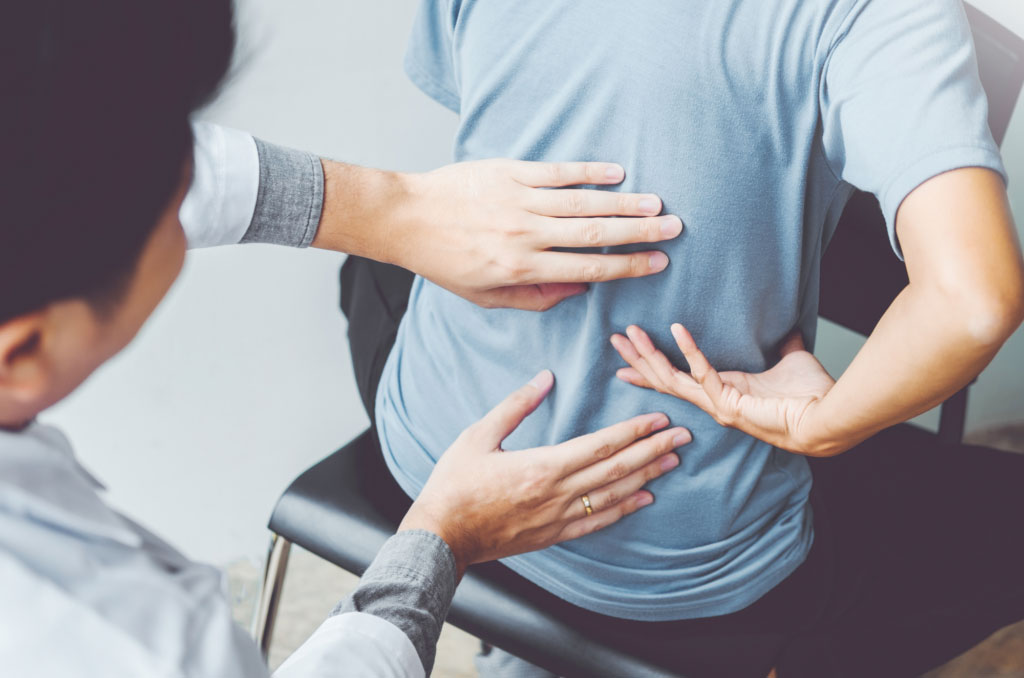Low back pain is a prevalent and often debilitating condition that can affect anyone at any age. Understanding the causes of low back pain is crucial for effective management and prevention. In this blog, we will explore the various factors that contribute to low back pain and discuss strategies for managing it effectively. If you’re struggling with persistent low back pain and need professional guidance, contact Specialty Care Clinics at (469) 545-9983.
Common Causes of Low Back Pain
Muscle Strain: Overuse or sudden movements can strain the muscles and ligaments in the lower back, leading to pain.
Herniated Disc: A herniated or “slipped” disc occurs when the soft inner core of an intervertebral disc pushes through the tough outer layer, often compressing nearby nerves.
Spinal Stenosis: This condition results from the narrowing of the spinal canal, causing pressure on the spinal cord or nerves.
Arthritis: Osteoarthritis, a degenerative joint disease, can affect the lower back and cause pain.
Scoliosis: An abnormal curvature of the spine can lead to muscle imbalances and low back pain.
Kidney Stones: When kidney stones move from the kidney to the urinary tract, they can cause severe low back pain.
Lifestyle Factors Contributing to Low Back Pain
Sedentary Lifestyle: Prolonged sitting and lack of physical activity can weaken the muscles supporting the lower back.
Obesity: Excess weight places additional stress on the spine and lower back, contributing to pain.
Poor Posture: Slouching, hunching, and improper body mechanics can strain the lower back over time.
Lifting Techniques: Incorrect lifting techniques, especially when lifting heavy objects, can cause low back injuries.
Smoking: Smoking reduces blood flow to the spine, depriving it of essential nutrients and contributing to pain.
Effective Low Back Pain Management
Physical Therapy: Physical therapy involves exercises to strengthen the muscles supporting the lower back and improve flexibility. A physical therapist can provide personalized guidance.
Medications: Over-the-counter or prescription pain medications, such as NSAIDs, can help manage pain and reduce inflammation.
Heat and Cold Therapy: Applying heat or cold packs to the affected area can provide relief by relaxing muscles and reducing inflammation.
Lifestyle Adjustments: Making lifestyle changes, such as regular exercise, maintaining a healthy weight, and improving posture, can prevent and alleviate low back pain.
Ergonomic Workstation: If you have a desk job, ensure that your workstation is ergonomically designed to support your spine and lower back.
Chiropractic Care: Chiropractors can perform spinal adjustments to alleviate pain and restore spinal alignment.
Massage Therapy: Massage therapy can relax tense muscles and improve circulation to the affected area.
Prevention and Long-Term Management
Regular Exercise: Engage in regular physical activity to maintain strong core muscles and a healthy spine.
Proper Lifting Techniques: Learn and apply correct lifting techniques to avoid strain and injury.
Weight Management: Maintain a healthy weight to reduce stress on the lower back.
Hydration: Staying well-hydrated can prevent kidney stones, a common cause of low back pain.
Quit Smoking: If you smoke, quitting can improve blood flow and reduce your risk of developing low back pain.
When to Seek Professional Help
While self-care can alleviate mild low back pain, it’s essential to consult a healthcare provider if your pain:
- Persists for more than a few weeks
- Is accompanied by numbness or weakness in your legs
- Is severe or gets worse over time
Understanding the causes of low back pain and implementing effective management strategies is essential for living a pain-free life. By addressing the root causes, making lifestyle adjustments, and seeking professional help when needed, you can take control of your low back pain and prevent it from interfering with your daily activities. Remember that early intervention and a proactive approach to spine health are key to long-term well-being.


